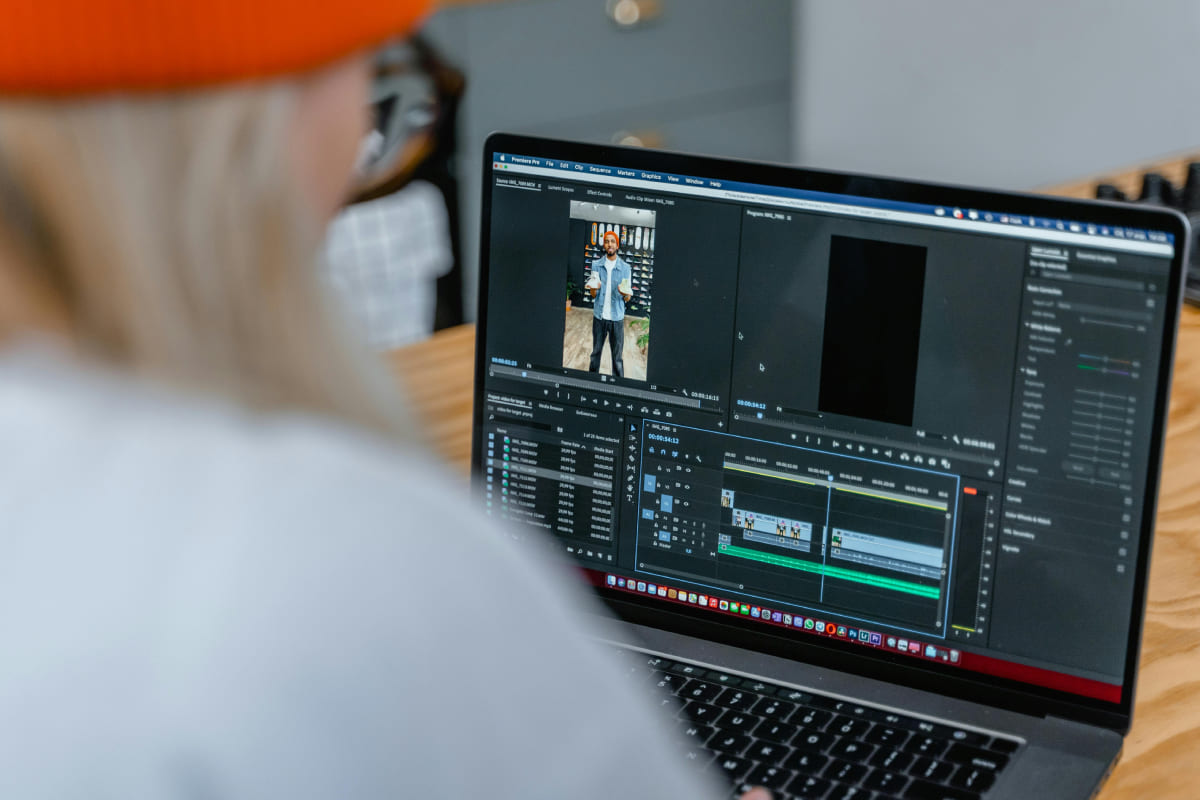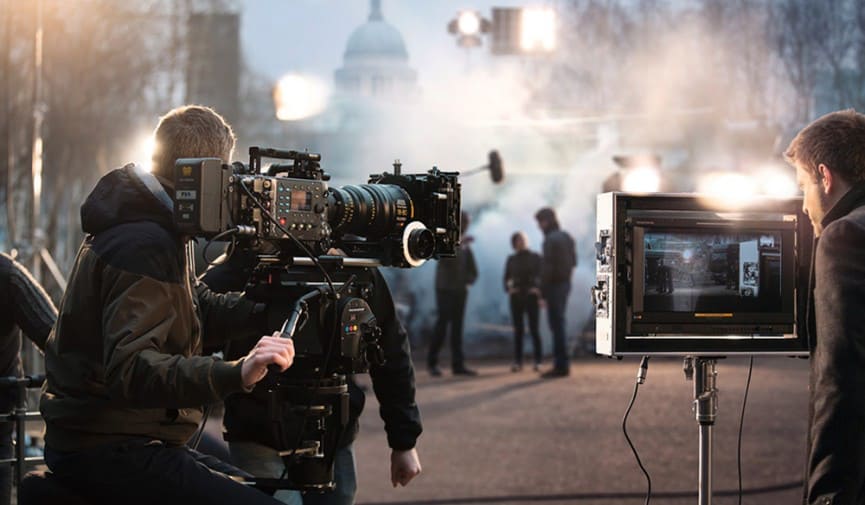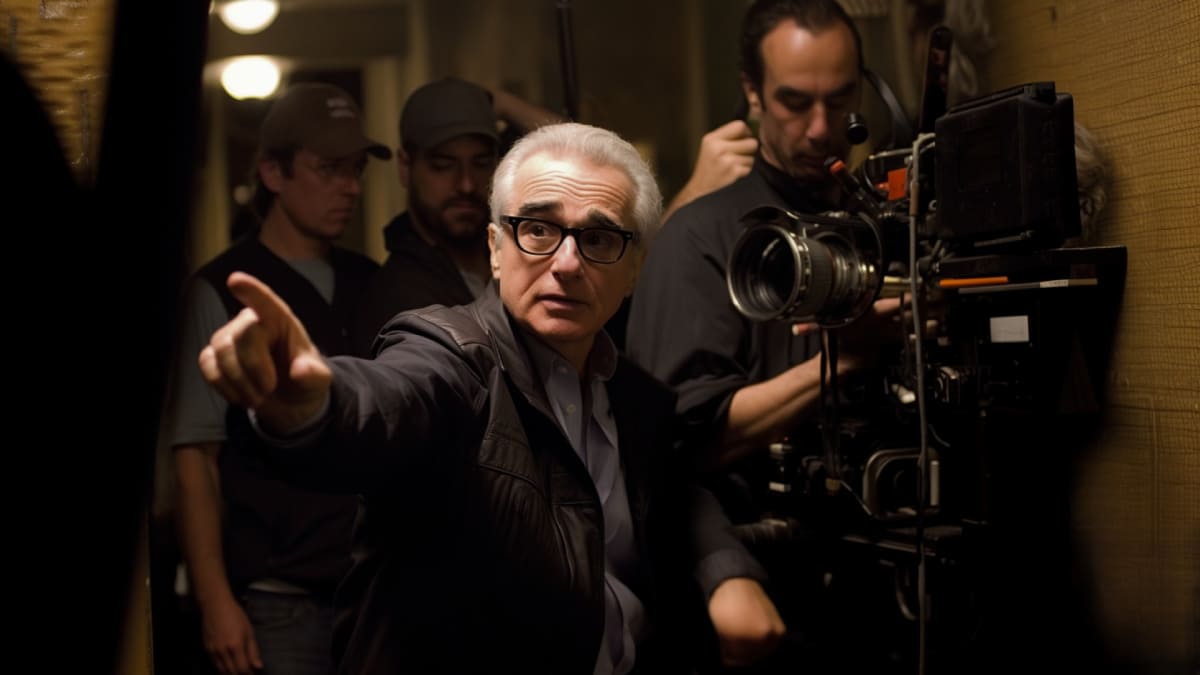Rough Cut: Film Editing Basics for Video Creators
If you're interested in video editing and filmmaking, one of the first professional terms you may hear is "rough cut." In this article, let's talk about what a rough cut is in video editing and filmmaking.

In this article, you will learn:
- What Is a Rough Cut?
- What Is an Assembly Cut?
- How Is Rough Cutting Done in the Film Industry?
- Rough Cut and Editing: A Fast-Track Approach to Content Creation
- Conclusion
What Is a Rough Cut?
A rough cut is the first step in the editing process. Its main goal is to put together the basic framework of the video quickly. The editor reviews the script or raw footage, picks out the best clips, and strings them together logically.
This creates a rough outline of the story, without worrying about details like exact cut points, color correction, or sound effects.

In professional film editing, the rough cut is a very important step. It's much more complex and vital than what we usually call a rough cut in simple video projects.
In movie production, the rough cut is a team effort. The director, editor, assistant editor, cinematographer, and producer often work on it together, and sometimes they even cut the footage themselves.
Technically speaking, most films start with an "Assembly Cut." This is like an early version before the rough cut. The rough cut is made after this assembly version.
Definition of a Rough Cut Version:
The rough cut is the film's first edited version. It usually features unfinished visual effects and temporary music. Sometimes people use "rough cut" and "assembly cut" to mean the same early version.
In this version, the main parts of the film are put in order, but it lacks the fine details, like final CGI or polished special effects.
Before the final edit begins, the director and editor review the scenes, making adjustments and cutting parts as needed. That's why the rough cut, especially the assembly version, is often much longer than the finished film.
Between the rough cut and the final cut, you can do what's called a fine cut. But keep in mind, that any version before the final cut is no longer considered a rough cut.
What Is an Assembly Cut?
In the last section, we mentioned the term "Assembly Cut." Assembly cut and rough cut are two ideas that can easily be confused. So, what exactly is an assembly cut?
An assembly cut is a type of rough cut. It's the version where all the footage from a film is put together in order, either following the script or the shooting schedule. Basically, there's very little actual "editing" done.
Sometimes, the on-set editor will start assembling the footage as soon as the camera stops rolling.
This means the assembly version is usually very long. For example, the final version of Anchorman 2: The Legend Continues is 119 minutes, but its assembly version was 270 minutes, more than half of the footage was later cut out.
The theatrical version of Avengers: Age of Ultron also cut out a full hour from its assembly cut. In Blade Runner 2049, the first assembly cut was so long that director Denis Villeneuve even considered splitting the film into two parts.

Movie lengths can vary a lot, but clearly, longer doesn't always mean better. If a film's assembly version is too long, the rough cut process can really save the movie from both an economic and market standpoint.
When you first see the story take shape in the rough cut, it might look very different from what you originally imagined. But that's a great chance to test whether your way of telling the story works and truly moves the audience.
There's even a famous story about this. When George Lucas first showed an early version of Star Wars to friends like Steven Spielberg and Brian De Palma, everyone in the room immediately agreed that the film needed to be re-edited.
How Is Rough Cutting Done in the Film Industry?
The post-production workflow in filmmaking can vary from project to project. Some filmmakers handle rough cuts and the entire editing process differently than others. However, they typically use scheduling software to keep the process on track.
Generally, the rough cut process in film editing involves three main steps:
- Organizing Footage: Label usable shots (e.g., "Take 3 - Best Performance") and remove obviously unusable footage (e.g., bloopers, out-of-focus shots).
- Assembly Edit: Arrange key shots in the order of the script, using temporary music or voiceovers to help with pacing.
- Initial Pacing Adjustment: Set the approximate length of individual shots (e.g., keeping full dialogue scenes) and insert placeholder titles or special effects (e.g., marking "Special Effects Needed Here").
Traditionally, the rough cut process begins with the director's decisions on set. They mark satisfactory shots during filming, but editors may or may not refer to these marks when assembling the footage.
These marks are usually recorded with circle symbols by the script supervisor or script supervisor in notes, sometimes with additional numbers. This was the practice during the film era and now seems cumbersome and costly.
With the advancement of digital technology, each shot can be replayed on set without limit. Some marks can be made by the photographer using the camera's internal software, or by on-site personnel directly on the footage.
Famous director Martin Scorsese, who prefers traditional film shooting processes, once said, "If you don't feel anything wrong when you first see the rough cut, something is wrong."
He and his long-time collaborator, editor Thelma Schoonmaker, have always followed traditional editing processes: repeatedly marking shots on set, reviewing dailies, assembling edits, reviewing rough cuts, and finally, the final cut.

Some directors, however, think outside the box. For example, Gareth Evans, director of Apostle and The Raid, developed his own digital shooting system and editing process to save time and money. Evans's approach ensures that the film's editing is determined before shooting begins.
By making key decisions in advance, they save time and money. On set, they also save shooting time, as the director knows exactly how to tell the story with the shots, avoiding wasting time on footage that won't be used in the final film.
Rough Cut and Editing: A Fast-Track Approach to Content Creation
In filmmaking, a rough cut is not just the first step where you string together tons of footage. It's more like a first look at the story, its pace, and its emotions.
During the rough cut stage, the goal is to carefully pick and rearrange the raw footage to form a basic story structure. This process lays a solid foundation for the more detailed editing that comes later.
For video editors and content creators, the ideas and methods behind this process are very practical.
1. Focus on the Core Message and Ditch Unnecessary Details
Whether you're making a full-length movie or a short video, you often have too much footage. A rough cut helps you selectively remove parts that distract from the main story, so you can focus on the key emotions and message.
2. Value the Importance of Structure and Pace
After you create a rough timeline, you can easily see if the clips flow naturally and the story feels smooth. Controlling the overall pace is especially important for short videos and social media content.
Content creators can use this chance to rethink and adjust the timing, making sure the audience quickly catches the main points and feels a connection.
In practice, try out different arrangements during the rough cut stage. Let the clips "talk" to each other until you find the best way to express the mood.
Whether you're working on a long story or quick, punchy content, keeping your projects organized, sorting your media, and planning your timeline are must-do basics. That's why we would like to recommend TourBox, a creative console that simplifies every step of video editing.

With TourBox, you can manage tedious tasks like organizing media, controlling your timeline, and color grading with just one hand, using fewer and smoother moves.

Without further ado, check out the video below to learn more about how TourBox can make your editing process easier.
3. Develop a Habit of Holistic Thinking
For video editors and content creators, the rough cut process is also a chance to build a habit of seeing the big picture. In today's fast-paced, information-heavy world, quickly creating an engaging content framework can make all the difference in how your work is received.
The trial-and-error approach and cutting out unnecessary parts during the rough cut help you sort out your ideas early. This way, you avoid getting stuck in the details later on.
As you gain more experience in video editing, you'll find the editing process that works best for you.
Conclusion
In filmmaking, a rough cut is more than just a technical step. It reflects a way of thinking and a creative mindset. It reminds us to find the heart of the story in a sea of footage and to refine the pace through trial and error. All of these are key to boosting the quality of your work.
We hope this article on rough cuts helps you create engaging and creative projects faster and more efficiently.